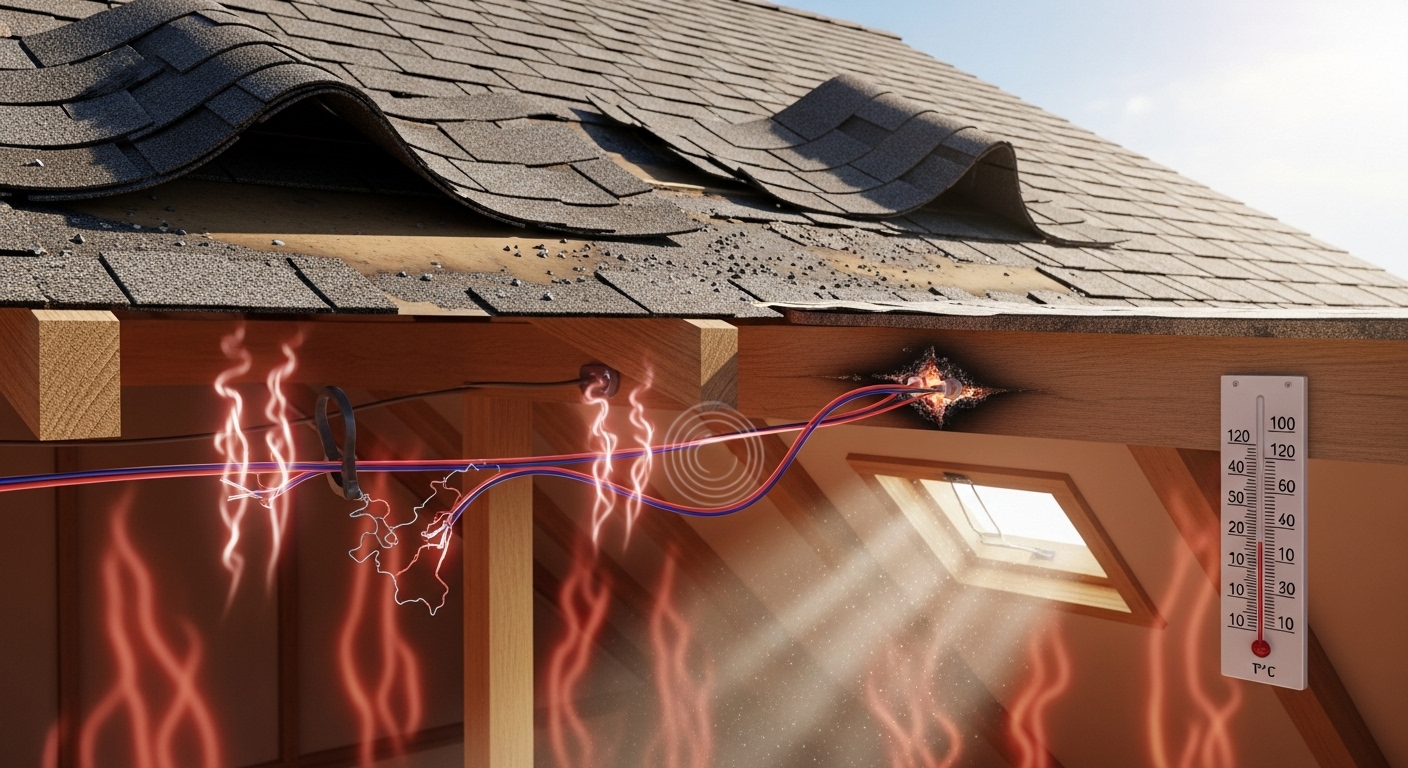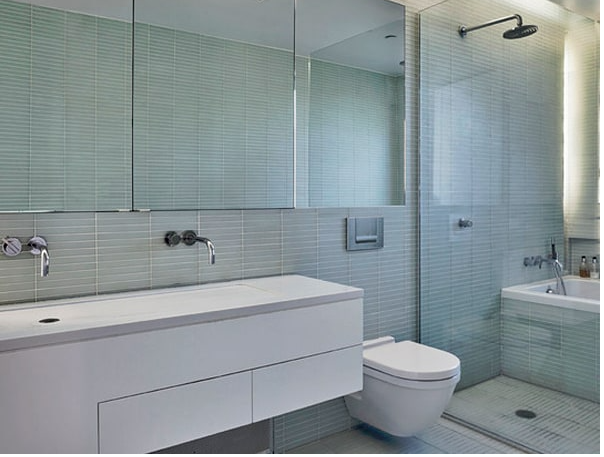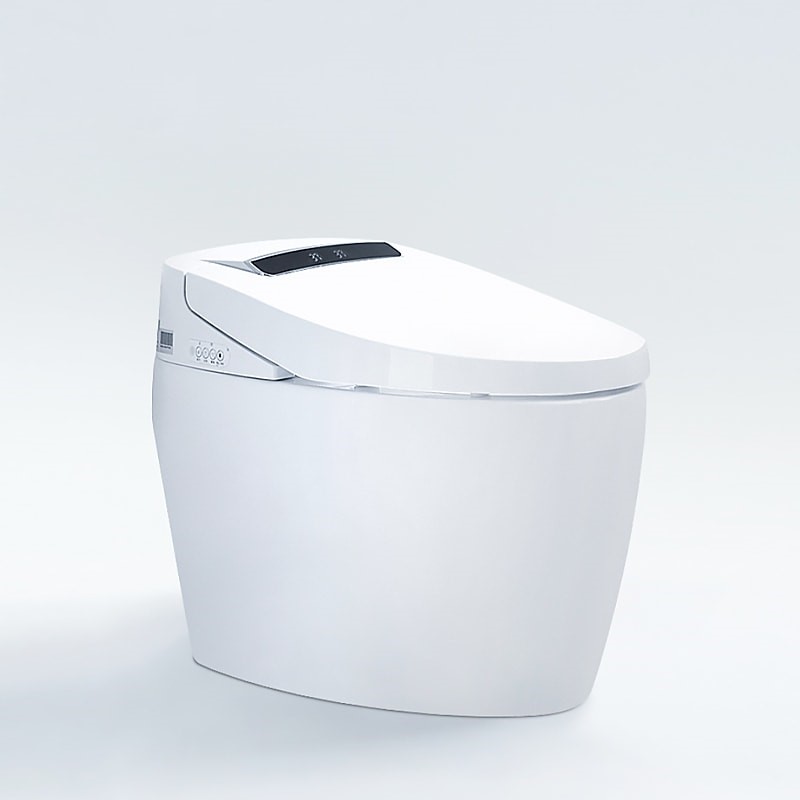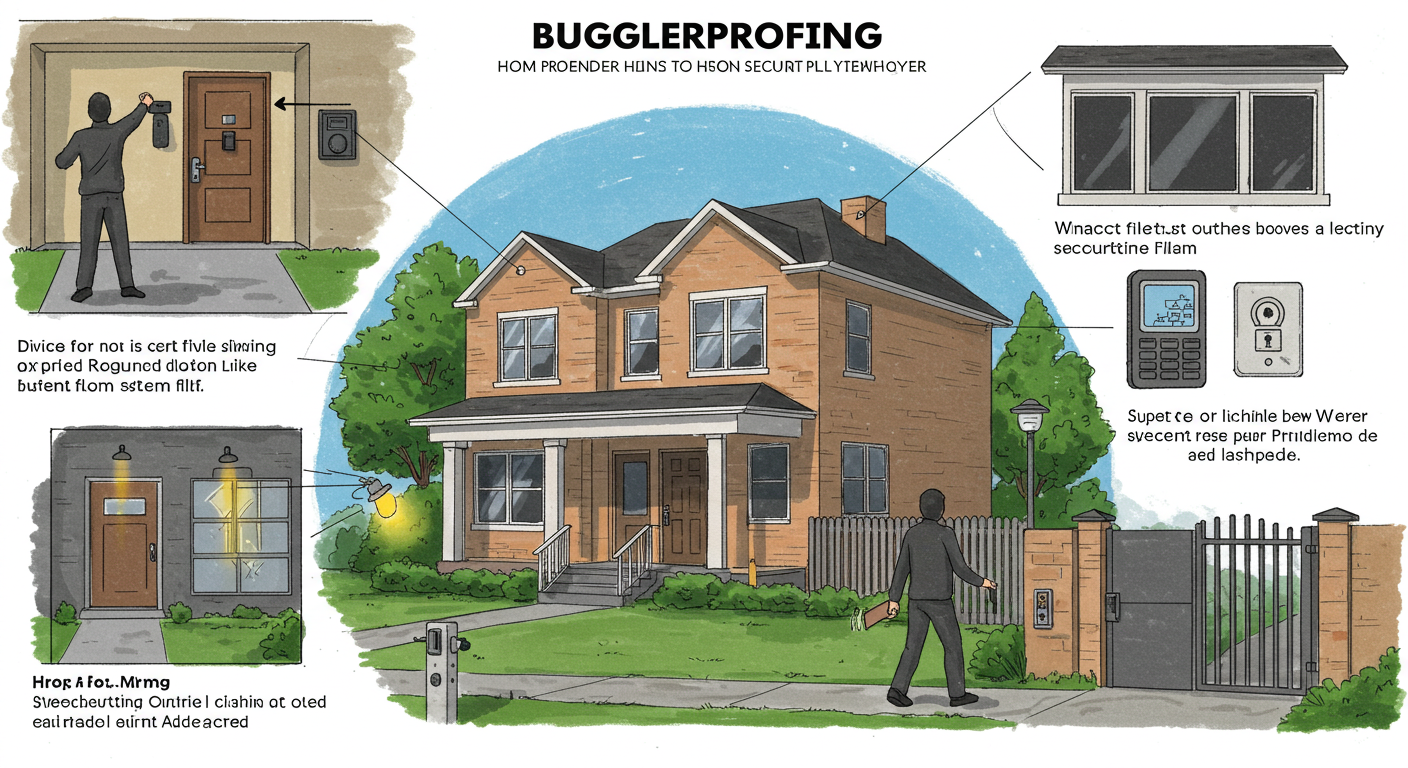Home improvement
How to Tackle Concrete Spalling Before It’s Too Late

You might think concrete spalling is just a minor issue but ignoring it could lead to major structural problems down the line. Imagine discovering crumbling concrete in crucial areas of your building when it’s too late to act.
Don’t let that happen – learn how to spot the warning signs early on and take proactive steps to address concrete spalling before it escalates. By following a few key strategies, you can safeguard your property and ensure its longevity.
Understanding Concrete Spalling Causes
To grasp the root causes of concrete spalling, one must delve into the intricate interactions of moisture, temperature fluctuations, and structural stresses. Concrete spalling occurs when moisture infiltrates the concrete, leading to internal pressure buildup as it expands upon freezing. This pressure weakens the concrete structure, making it susceptible to cracking and eventual spalling. Temperature fluctuations exacerbate this process by causing the concrete to expand and contract, further stressing its integrity. Structural stresses from factors such as heavy loads or improper construction can also contribute to concrete spalling by weakening the concrete’s composition.
When addressing concrete spalling, it’s crucial to consider appropriate spalling repair techniques. Using specialized materials to fill and reinforce the affected areas can help restore the concrete’s strength and prevent further deterioration. Additionally, employing an exterior concrete stain remover can aid in cleaning the surface and preparing it for repairs. Understanding these underlying causes is essential in effectively combating concrete spalling and ensuring the longevity of concrete structures.
Early Signs of Concrete Spalling
Understanding the early signs of concrete spalling is crucial in identifying potential structural issues before they escalate into more significant problems. One of the primary indicators of concrete spalling is the presence of flaking or chipping on the surface of the concrete. These small, localized areas of damage can indicate that the concrete is beginning to deteriorate.
Another early sign to watch for is the appearance of cracks on the concrete surface. Cracks can allow moisture to penetrate the concrete, leading to spalling over time. Additionally, if you notice that the concrete surface is becoming rough or pitted, it could be a sign of underlying spalling issues.
Efflorescence, which presents white, powdery deposits on the concrete surface, can also be an early warning sign of spalling. Monitoring these signs regularly can help you catch concrete spalling in its early stages and address it before it worsens.
Implementing Preventative Maintenance Measures
A better tactic than spalling repair is implementing preventative maintenance measures. These involve regularly inspecting and repairing concrete surfaces to prevent spalling and prolong the structural integrity of the material.
To begin, conduct frequent visual assessments of the concrete for any signs of wear, such as cracks, delamination, or surface deterioration. Addressing these issues promptly can prevent them from escalating into more significant problems that may lead to spalling.
In addition to visual inspections, it’s crucial to keep concrete surfaces clean and free from chemicals that can accelerate deterioration. Regularly cleaning the concrete and avoiding the use of deicing salts or other corrosive substances can help maintain its durability and resilience against spalling.
Furthermore, applying sealants or coatings can provide an added layer of protection against moisture infiltration and chemical exposure, reducing the risk of spalling. These protective measures create a barrier that helps to preserve the concrete surface and prevent potential damage.
Repairing Concrete Spalling Damage
Addressing concrete spalling damage requires a systematic assessment of the affected areas to determine the extent of deterioration and plan appropriate repair strategies. Begin by inspecting the concrete surface for signs of spalling, such as flaking, cracking, or delamination. Use a hammer to tap along the surface and identify hollow sounds, indicating areas of potential spalling. Once identified, remove the loose and deteriorated concrete using appropriate tools such as chisels or grinders, ensuring the area is clean and free from debris.
Next, prepare the surface by roughening it to promote better adhesion of the repair material. Apply a bonding agent to enhance the bond between the existing concrete and the repair material. Depending on the severity of the damage, choose an appropriate repair material such as polymer-modified cementitious mortar or epoxy-based compounds. Follow the manufacturer’s instructions for mixing and application, ensuring proper curing for a durable repair.
Long-Term Strategies for Spalling Prevention
To proactively mitigate future instances of concrete spalling, consider implementing a comprehensive maintenance plan that includes regular inspections and targeted repairs based on identified deterioration. Regular inspections are crucial to catch early signs of deterioration that could lead to spalling. These inspections should involve assessing the concrete surface for cracks, spalls, and discoloration, as well as evaluating the surrounding environment for factors like moisture intrusion, freeze-thaw cycles, and chemical exposure.
In addition to inspections, targeted repairs should be conducted promptly to address any identified issues before they escalate. Repair methods may include patching damaged areas, applying protective coatings, or improving drainage systems to prevent water infiltration. It’s essential to use high-quality materials and techniques approved for concrete repair to ensure long-lasting results.
Furthermore, consider implementing measures to minimize environmental stresses on the concrete, such as installing proper drainage systems, providing adequate protection from harsh weather conditions, and avoiding the use of deicing salts. By taking a proactive approach to maintenance and repair, you can effectively prevent concrete spalling and prolong the lifespan of your structures.
Conclusion
In conclusion, understanding the causes of concrete spalling is essential. Recognizing early signs, such as cracks and flaking, can help prevent further damage. Implementing preventative maintenance measures, such as sealing and waterproofing, can also mitigate spalling risks. Promptly repairing any spalled areas with appropriate materials and techniques is crucial to prevent escalation.
By taking proactive measures and investing in long-term prevention strategies, you can protect your concrete structures from deterioration and ensure their longevity and durability.
Remember, addressing concrete spalling promptly can save you time, money, and potential safety hazards in the future.
Home improvement
How Summer Heat Exposes Hidden Roof and Electrical Problems

The summer sun does not just test your patience; it also challenges your home’s durability. Long-term heat, humidity and UV may bring up issues like breaking roof tiles, overloading of circuits, and dulling of Marble Benchtop surfaces. In the absence of frequent repairs, these problems may easily become expensive to repair. Reroofing is done periodically, and contracting a specialist Electrician Near Me before the summer sets in makes your home safe and makes your stay in a comfortable homestead.
The Hidden Impact of Summer Heat on Your Home
Rising Temperatures Put Pressure on Roof Structures
The severe heat and constant exposure to the sun make the roofing materials swell up and shrink down as the day progresses. In the long run, this movement makes the joints weak, tiles crack, and leaks occur. Broken roofs are also less efficient in insulation, and as a result, the indoor areas may become hotter, as well as raise the costs of cooling. Reroofing before the summer months provides great protection, improved cooling, among other things and savings in energy and repairs are long-term.
Overheating Electrical Systems and Fire Hazards
In summer, air conditioners, refrigerators and fans apply excessive load on electrical circuits. Old wiring and congested switchboards may get hot, posing the danger of a short circuit or fire. Periodic checking and subsequent repairs by licensed electricians near me will ensure that they observe unusual symptoms of stress early enough, to avoid power outage, proper functioning of your system and that it is functioning safely and properly at its peak performance during the summer weather.
Heat and Humidity Affecting Marble Surfaces
During the summer season, the kitchens and the bathrooms tend to be very humid and thus dull the shine of your Marble Benchtop and result in discolouration of the surface. Water percolating through plain marble causes staining and carving. Maintaining ventilation, wiping and using an appropriate sealant before the season commences will save your marble surfaces, even to the point when they are in damp climates, which will keep them shiny and glamorous.
The Best Preventive Solutions for a Heat-Resilient Home
Reroofing to Strengthen Your Home’s Defence
The first line of defence for the home against the harsh summer weather is the good maintenance of the roof. Reroofing is not only used to cover damaged tiles, but also ensures that there is adequate ventilation and insulation. Reflective or light-coloured materials are to be used to prevent the sun from radiating onto your interiors so that your energy bill remains lower. Prophylactic roofing will provide a durable job economically and structurally.
Professional Electrical Inspection Before Peak Season
It is necessary to hire a qualified electrician near me even before summer sets in to get an inspection done. An expert will be able to detect overloaded circuits, faulty wiring or old switchboards before they could be a serious hazard. Maintaining the electrical system allows a constant energy supply, improving energy efficiency, and greatly reducing the chances of short-circuiting or overheating in months with high demand.
Caring for Marble Benchtops Against Summer Moisture
It takes additional precautions for your Marble Benchtop during the wet seasons. Use a quality sealant to prevent water uptake as well as stains. Hot pots or pans should not come in direct contact with the marble surface since the volume of such temperature changes may spoil the surface. Smooth, glossy marble surfaces are maintained without discolouration in summer by frequent cleaning with mild products of a pH-neutral nature.
Final Thoughts – Maintenance Now, Savings Later
Investing in Preventive Care for Long-Term Safety and Value
Summer heat can reveal hidden weaknesses in your home’s structure and systems. Cracked roofs, stressed wiring, and moisture-affected Marble Benchtop surfaces are common issues that often go unnoticed until it’s too late. Proactive maintenance, including timely Reroofing, electrical inspections by an Electrician Near Me, and proper care of marble surfaces, helps avoid costly repairs. Investing in prevention not only protects your home’s safety and appearance but also ensures comfort and efficiency throughout the hottest months.
Frequently Asked Questions
How does summer heat affect roof materials?
Constant sunlight and heat cause roof tiles to expand, contract, and eventually crack. This allows water and heat to enter the home, weakening insulation. Regular maintenance and timely Reroofing prevent damage and improve the roof’s thermal performance during hot months.
When should I plan reroofing for my home?
The ideal time for Reroofing is before late summer or the start of the wet season. Cooler months allow efficient installation, ensuring your roof is structurally sound and ready to withstand extreme heat and seasonal temperature fluctuations.
Why do electrical circuits trip more in summer?
Electrical circuits often trip due to increased energy consumption during summer. Appliances like air conditioners, coolers, and refrigerators demand higher power. Hiring an Electrician Near Me ensures your wiring, fuses, and switchboards are capable of handling the additional electrical load safely.
Can marble benchtops handle summer humidity?
Marble is a porous material, and high humidity can lead to staining or dullness. Regular sealing and proper ventilation help your Marble Benchtop resist moisture. Wiping up spills quickly also prevents etching and keeps your marble looking pristine in humid conditions.
What’s the benefit of early maintenance before summer?
Early maintenance allows you to fix issues before extreme heat worsens them. Whether it’s reroofing, electrical inspections, or marble care, proactive upkeep prevents breakdowns, reduces repair costs, and ensures your home remains safe and efficient throughout the summer season.
Home improvement
Is a Heated Seat Bidet Toilet Safe? Common Misconceptions

Heated seat bidet toilets feature various high-tech functionalities, such as adjustable water temperatures, air dryers, and, of course, heated seats. So, they have gained significant popularity over the years, offering users a more comfortable and hygienic bathroom experience.
However, as with any new technology, safety concerns often arise, particularly for households with children or elderly members.
In this article, we will explore common safety concerns and myths about heated seat bidet toilets, focusing on how they affect households with children, seniors, or individuals with specific needs.

1. Common Misconceptions About Heated Seat Bidet Toilets
Despite their growing popularity, several myths about heated seat bidet toilets still exist. Let’s take a look at some of the most common misconceptions:
- Misconception 1: They Are Expensive to Run
A common myth is that heated bidet toilets will significantly increase your electricity bill. However, most of these toilets are energy-efficient, and the heating element consumes only a small amount of energy. The cost of using a heated seat bidet toilet is generally far less than that of running high-power appliances like water heaters. - Misconception 2: They Are Difficult to Install
Some people assume that installing a heated seat bidet toilet requires complex plumbing or electrical work. Most bidet toilets are easy to install, with many models designed for DIY setup. Some even come with plug-and-play functionality, making the installation process simple and quick. - Misconception 3: They Are Only for Luxury Bathrooms
While heated seat bidet toilets may feel like a luxury item, they are available at a range of price points to suit different budgets. Affordable models provide the same benefits as higher-end versions, so you don’t have to spend a fortune to enjoy the comfort and hygiene benefits.
If you’re looking to explore various types of toilets, consider checking out a list of top toilet manufacturers to find high-quality options for your home.
2. Are Heated Seat Bidet Toilets Safe for Children?
One of the most common concerns parents have when considering a heated seat bidet toilet is whether it poses a risk to young children. The main worry is that the heated seat might become too hot and cause burns. However, here are several ways in which these toilets ensure safety for kids:
- Adjustable Temperature: A heated seat bidet toilet offers customizable seat warmth settings, which are typically mild (ranging from 30°C to 40°C). This ensures the seat remains comfortable for both adults and children without overheating. The ability to control the seat’s temperature helps to prevent any risk of burns.
- Built-In Safety Features: High-quality models often come with safety mechanisms that prevent the seat from becoming too hot. For example, once the seat reaches a preset temperature, the system will stop heating automatically or adjust the warmth to ensure safe usage. This feature is especially beneficial in homes with children.
- Supervision for Younger Children: While heated toilets are safe for older children, toddlers or very young kids should always be supervised when using any bathroom fixture, including the toilet with a bidet and a heated seat. Supervision ensures safety, and parents can adjust the settings to meet the comfort and safety needs of their children.
3. Are Heated Seat Bidet Toilets Safe for the Elderly?
For elderly users, heated seat bidet toilets can provide comfort and convenience. However, many older adults may have concerns about the new technology. Let’s explore why a bidet toilet with a dryer and heated seat can be beneficial and safe for seniors:
- Enhanced Comfort: The warmth from a heated seat bidet toilet makes it easier for elderly individuals to sit down and stand up. Cold toilet seats can be uncomfortable, especially for those with arthritis or poor circulation. The heated seat provides a soothing experience that helps reduce discomfort during use.
- Bidet Functionality for Hygiene: For older adults, using a bidet function can improve personal hygiene, as it reduces the need for excessive wiping, which might be painful or challenging. The warm water bidet toilet provides a gentle cleaning experience, offering improved hygiene without the risk of irritation that could come from excessive wiping.
- Electric Safety: Many users are concerned about the risk of electric shock when using a heated bidet toilet, especially seniors. Fortunately, these toilets are equipped with ground fault circuit interrupters (GFCI) to automatically cut off power if an electrical fault is detected, greatly reducing the risk of electrical hazards.
- Elderly-Friendly Design: Many modern toilets with bidet and heated seat models are designed with seniors in mind. For example, some toilets come with easy-to-use remote controls or buttons, allowing elderly individuals to operate the toilet with minimal effort.
4. Are Heated Seat Bidet Toilets Safe for People with Sensitive Skin?
Sensitive skin can be a concern for some individuals, particularly when it comes to new products that come into direct contact with the skin. However, heated seat bidet toilets can be gentle and even beneficial for people with sensitive skin:
- Gentle Water Spray: The water spray from a warm water bidet toilet is gentle and adjustable. This is ideal for individuals with sensitive skin, as the water stream is much less abrasive than traditional toilet paper. The soft, regulated spray minimizes the risk of irritation, rashes, or chafing.
- Comfortable Heated Seats: The warm seat itself can be soothing for people with sensitive skin. In cold weather, a heated seat offers immediate relief from cold toilet seats that might cause discomfort. As long as the temperature is set to a comfortable level, there’s no risk of overheating the seat or causing skin issues.
- Material Safety: Many heated bidet toilet models are made from hypoallergenic materials that are safe for people with sensitive skin. If skin sensitivity is a concern, it’s important to look for products that highlight these features.
5. Can a Heated Seat Bidet Toilet Overheat?
The fear of a heated seat bidet toilet becoming too hot is another common misconception. While some people worry that a heated seat could burn them, modern designs ensure safety in the following ways:
- Thermostatic Control: Heated bidet toilets are equipped with thermostats that regulate the seat temperature, keeping it within a safe and comfortable range. The temperature is typically not hot enough to cause burns, even with prolonged sitting. If the seat ever becomes too warm, most models will automatically adjust or shut off to maintain a safe level.
- Built-in Sensors: Many bidet toilets are designed with safety sensors that monitor the seat’s temperature. If the system detects any issues, such as overheating, it will deactivate the heating element to prevent accidents. This ensures the toilet remains safe for everyone.
- Regular Maintenance: Overheating can occur if the system isn’t properly maintained. To avoid this, it’s recommended that you regularly check and maintain your toilet with a bidet and a heated seat. Most manufacturers will provide guidelines on how to keep the system in good working order.
Conclusion
In conclusion, heated seat bidet toilets are safe for people of all ages, including children and the elderly, when used properly. They are designed with safety features, such as adjustable temperatures and automatic shutoffs, to ensure a comfortable and safe bathroom experience.
By addressing common myths and concerns, it is helpful to clear up any doubts you may have about heated seat bidet toilets. They are not only luxurious but also reliable and safe when installed and used correctly, making them a great choice for modern households looking to enhance their bathroom experience.
Home improvement
Burglar proofing your home

When we think about home security, we often imagine high-tech alarm systems, locks on doors, and maybe even a big dog that barks at anything that moves. But there’s more to burglar-proofing your home than just the basics. The truth is, many homes experience burglaries every year, resulting in not only financial losses but the emotional pain that comes with having your privacy invaded and your safety compromised. Fortunately, there are practical ways to burglar-proof your house that go beyond just installing a security system for the home. Here’s a fresh approach to making your home safer, one step at a time.
The Power of Simple, Everyday Deterrents
Most burglars aren’t looking to break into homes that are clearly secured. They tend to look for places that are easy targets. One of the best things you can do to deter a potential thief is to make your home look occupied—even when you’re not home.
Start by ensuring your yard is well-lit, especially around entry points. Motion-sensing lights can be a great way to surprise intruders, making them think twice before approaching your home. Next, don’t forget about windows and doors. Keep your blinds and curtains closed when you’re not around. Burglars love to scout houses for easy access, and a dark, empty room with a view to an open window is an invitation.
You might also want to consider getting a couple of inexpensive “fake” security cameras or even placing a security system sticker on your window. While these aren’t as effective as an actual security system for the home, they can give the illusion that your house is being monitored, which might be enough to scare off some criminals.
Reinforcing Your Doors and Windows
Your doors and windows are your first line of defense. But surprisingly, many burglars gain access through weak points in these areas. To burglar-proof your home, it’s crucial to make sure your doors and windows are as secure as possible.
Start with your front door. A solid wood or metal door is much harder to break through than a hollow one. Also, make sure the hinges are on the inside, as this makes it much more difficult for burglars to tamper with them. For extra protection, install a deadbolt lock along with a high-quality doorknob lock. Don’t forget to secure the door frame and strike plate with long screws to prevent someone from kicking it in.
Windows are another easy target, especially those that are left open or unlocked. A simple trick is to place a dowel or metal bar in the window track to prevent it from being easily lifted. Also, be mindful of the locks you use. Sliding glass doors, for example, are vulnerable, so consider a security bar or a locking pin to secure the track.
Landscaping and Visibility
Believe it or not, your landscaping could play a major role in burglar-proofing your home. Overgrown bushes, tall trees, and unkempt gardens may provide cover for burglars to hide in while they plan their move. Trim back any shrubbery that blocks the view of your doors or windows from the street. This not only helps you keep an eye on the exterior of your home but also makes it more difficult for a burglar to approach without being seen.
Consider adding thorny bushes or plants around windows and doors. Not only do they make it more difficult to break in, but they also serve as a visual deterrent. If someone sees a bush full of thorns, they might think twice about approaching.
Utilizing Technology to Your Advantage
While simple deterrents like lighting and landscaping are effective, don’t overlook the power of technology when it comes to burglar-proofing your home. A modern security system for the home can do much more than just trigger an alarm if a burglar enters. Many systems now come with features like surveillance cameras, remote monitoring via smartphone, and even doorbell cameras that allow you to see and talk to people at your front door, even when you’re not at home.
You can also install smart locks that allow you to lock and unlock your doors from your phone. This is especially useful if you’re coming home late at night and want to ensure that all your doors are locked, or if you want to grant someone access while you’re away. Smart doorbells, which include video and motion sensors, allow you to keep an eye on who’s approaching your home, helping you spot suspicious behavior before it escalates.
Secure Your Garage and Outbuildings
Many people forget to secure their garages or outbuildings, but these areas can be an easy entry point for burglars. A garage door opener, for instance, can be hacked or simply broken into. Make sure your garage door is equipped with a sturdy lock and avoid leaving keys, valuables, or tools in plain sight inside. Install a motion sensor light in the garage to make it less inviting for burglars at night.
If you have a shed or other outbuildings on your property, treat them with the same level of care as your home. Secure windows and doors with high-quality locks, and consider installing motion lights or even a small alarm system.
Building a Community of Awareness
One of the most effective ways to prevent crime in any neighborhood is to foster a sense of community awareness. Talk to your neighbors about looking out for each other, especially if you’re planning to be away for an extended period. Burglars often target homes that are isolated or unmonitored, so having a neighborhood watch in place can go a long way in keeping your property safe.
Sharing information about unusual activity or suspicious people in the area can help prevent crimes before they happen. Encourage neighbors to report any strange vehicles, unfamiliar faces, or anything that seems out of place.
Conclusion
Burglar-proofing your home doesn’t require a major overhaul or expensive technology; sometimes, it’s the simple things that make the biggest difference. By implementing a combination of practical steps, such as reinforcing doors and windows, adding lighting, securing your garage, and utilizing technology, you can significantly reduce your chances of becoming a victim of burglary. Remember, burglars are looking for easy targets, so make your home one that’s too much trouble to mess with. With a little effort and a few thoughtful changes, you can make your home a safer, more secure place to live.
-

 GENERAL2 years ago
GENERAL2 years agoDiscovering the Artistic Brilliance of Derpixon: A Deep Dive into their Animation and Illustration
-

 Posts2 years ago
Posts2 years agoSiegel, Cooper & Co.
-

 Lifestyle2 years ago
Lifestyle2 years agoPurenudism.com: Unveiling the Beauty of Naturist Lifestyle
-

 FASHION2 years ago
FASHION2 years agoThe Many Faces of “λιβαισ”: A Comprehensive Guide to its Symbolism in Different Cultures
-

 Lifestyle2 years ago
Lifestyle2 years agoBaddieHub: Unleashing Confidence and Style in the Ultimate Gathering Spot for the Baddie Lifestyle
-

 HEALTH2 years ago
HEALTH2 years agoTransformative Health Solutions: Unveiling the Breakthroughs of 10x Health
-

 Entertainment2 years ago
Entertainment2 years agoGeekzilla Podcast: Navigating the World of Pop Culture, Gaming, and Tech
-

 Lifestyle1 year ago
Lifestyle1 year agoSandra orlow: Unraveling the Story of an Iconic Figure
